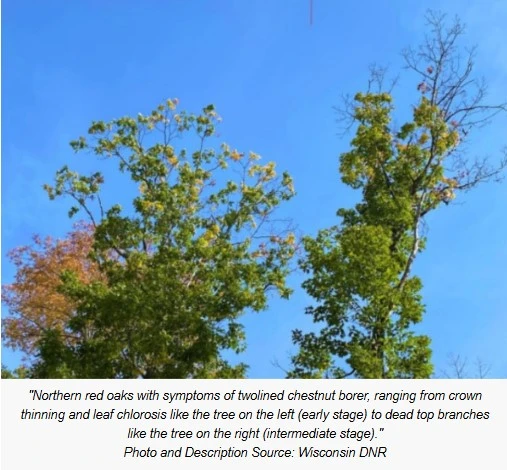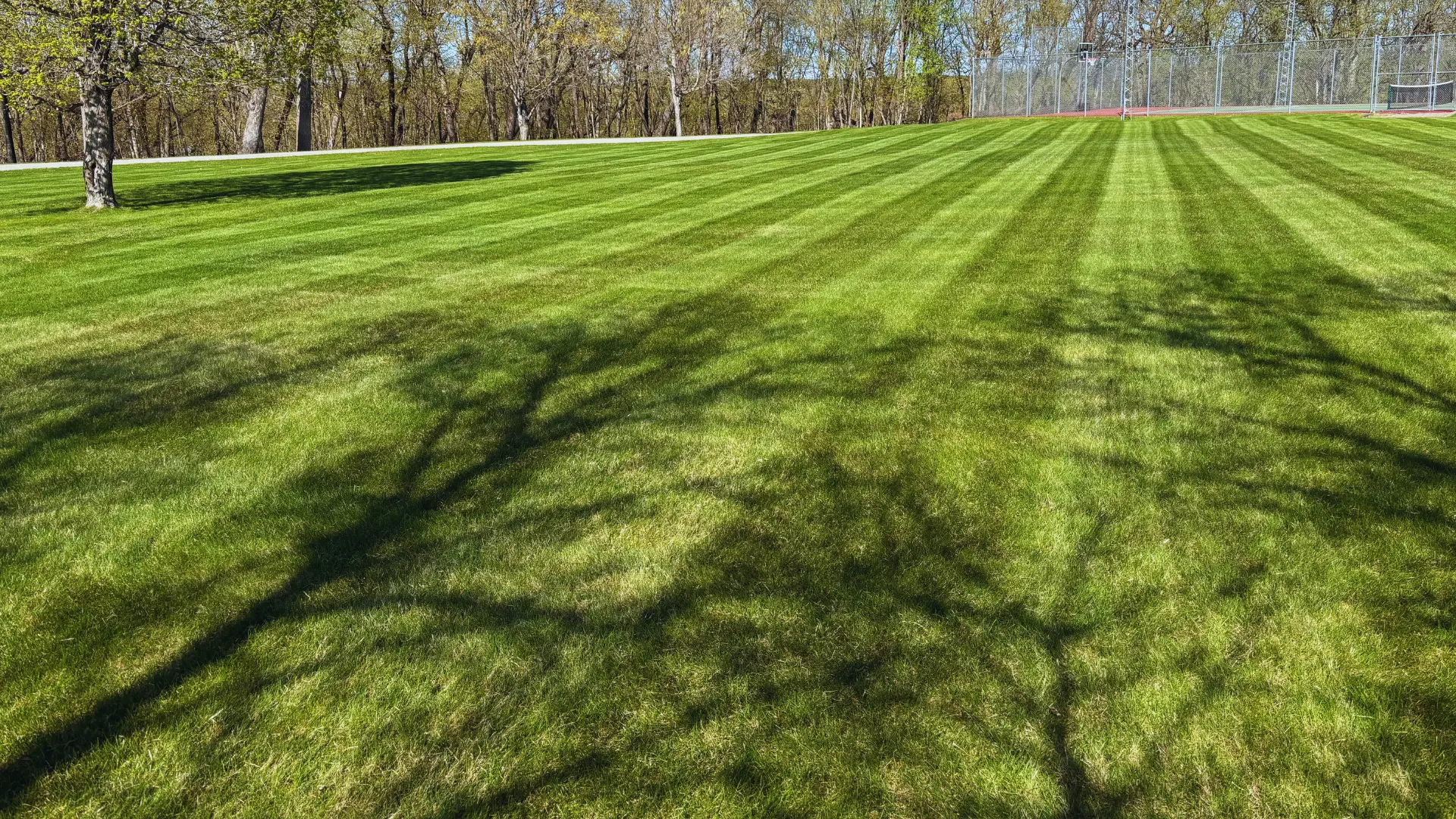Here in the Detroit Lakes area, our oak trees are more than just part of the landscape; they are majestic giants that define our properties, lakefronts, and wooded areas. From the mighty bur oak to the stately red oak, these trees are a cornerstone of our beautiful Minnesota environment. But a hidden threat is putting our oaks at risk, especially after periods of drought or stress. It’s called the Twolined Chestnut Borer, and it’s a pest every local homeowner should know about.
At Miller Yard Care, we're seeing an increasing number of oak trees around Detroit Lakes showing signs of decline. Often, the culprit is this destructive insect. The good news is that with early detection and proper care, you can take steps to protect your valuable trees.
What is the Twolined Chestnut Borer?
The twolined chestnut borer (Agrilus bilineatus) is a native flatheaded wood-boring beetle. While it's a native insect, its populations can surge, particularly when oak trees are stressed. Recent drought years in Minnesota have created the perfect conditions for this pest to thrive, as stressed trees have fewer defenses against attack.
Information from leading regional institutions like the University of Minnesota Extension and the University of Wisconsin-Madison highlights that this borer primarily targets oaks that are already weakened by factors such as:
-
Drought stress
-
Construction damage to roots
-
Soil compaction
-
Storm damage
-
Defoliation from other pests like spongy moths
The borer's larvae tunnel just beneath the bark, creating winding galleries that cut off the tree's ability to transport water and nutrients. This disruption is what ultimately leads to the tree's decline and death.
Signs and Symptoms: Is Your Oak Tree Infested?
Catching an infestation early is key to saving your tree. Here’s what to look for, starting from the top of the tree and working your way down:
-
Canopy Dieback: The earliest and most common symptom is the browning and wilting of leaves at the top of the tree, often starting in the upper branches. This typically appears in mid-to-late summer.
-
Branch Death: As the infestation progresses, entire branches in the upper canopy will die. The dead, brown leaves will often remain on the tree.
-
D-Shaped Exit Holes: Once the adult beetles emerge from the tree, they leave behind small, D-shaped holes in the bark, about 1/8 inch in size. These can be difficult to spot but are a definitive sign of an infestation.
-
Bark Cracking: As the tree's tissue underneath is damaged, the bark may crack and pull away from the wood.
If you're seeing any of these signs, especially the dieback in the upper canopy, it's time to take action.

Don't Wait: Professional Assessment is Crucial
It can be difficult for an untrained eye to distinguish twolined chestnut borer damage from other tree health issues. That's why a professional assessment is so important. A certified arborist can properly identify the cause of your tree's decline and recommend a course of action.
We're Here to Help Our Detroit Lakes Neighbors
At Miller Yard Care, we are committed to preserving the health and beauty of our local landscapes. We understand the value of your mature oak trees and the threat posed by the twolined chestnut borer.
That's why we are offering a complimentary, no-obligation site assessment for homeowners in the Detroit Lakes, Minnesota area.
Here’s what our free assessment includes:
-
A thorough inspection of your oak trees by one of our experienced tree care professionals.
-
Identification of any signs or symptoms of twolined chestnut borer or other potential stressors.
-
A conversation with you to discuss our findings and answer any questions you may have.
-
A clear, written proposal outlining our recommendations for treatment and care, whether it's targeted insect management, therapeutic injections, or specific pruning to remove affected limbs.
Protecting the oaks in our community is a group effort. If you are concerned about the health of your trees, don't hesitate.


Comments (0)
Sorry! The comments have been closed.